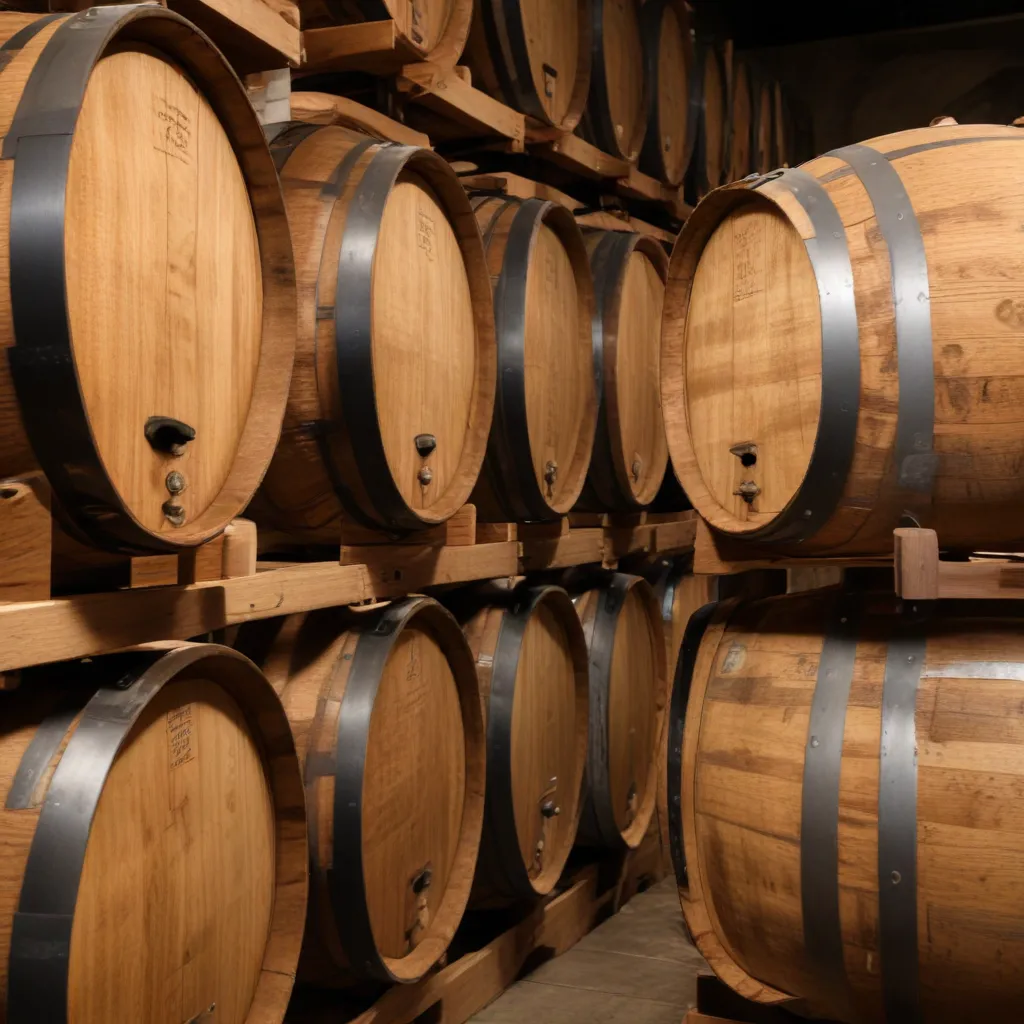
The art of winemaking is a captivating journey, where the interplay between nature, science, and human craftsmanship creates intricately nuanced flavors. At the heart of this symphony lies the transformative power of oak aging, a process that can elevate a wine’s character, imbuing it with layers of complexity and depth.
The Science of Oak Aging
The Oak Tree and Its Influence
Oak trees, long revered for their strength, durability, and unparalleled ability to impart distinct flavors, have been an integral part of the winemaking process for centuries. These stately giants, native to various regions around the world, offer a remarkable diversity of characteristics that can profoundly shape the final expression of a wine.
Chemical Composition of Oak
The unique chemical makeup of oak is what makes it so influential in the aging process. Oak is rich in tannins, vanillins, lactones, and a host of other aromatic compounds that interact with the wine in captivating ways. As the wine rests in the barrel, these compounds are slowly released, infusing the liquid with subtle flavors of vanilla, caramel, spice, and even coconut.
Oak Barrel Production
Crafting the perfect oak barrel is an art in itself, requiring meticulous attention to detail and a deep understanding of the wood’s properties. The selection of the oak species, the seasoning process, and the toasting level all play crucial roles in determining the final impact on the wine. From the dense, structured tannins of French oak to the smooth, vanilla-tinged notes of American oak, each barrel offers a unique signature that the winemaker can leverage to create a truly distinctive wine.
The Aging Process in Oak Barrels
Oxidation and Evaporation
The aging process in oak barrels is a delicate dance between the wine and its container. Controlled oxidation, facilitated by the porous nature of the wood, can soften tannins and create a more integrated, harmonious flavor profile. Meanwhile, the slow evaporation of the wine through the barrel staves concentrates the flavors, adding further complexity and intensity.
Interaction with Wine Components
As the wine interacts with the oak, a fascinating series of chemical reactions takes place. Tannins from the wood bind with those extracted from the grapes, resulting in a more structured mouthfeel. The breakdown of the oak’s lignin and hemicellulose compounds contributes to the development of distinctive aromas and flavors, such as the beloved vanilla and caramel notes.
Maturation of Flavor Profiles
Over time, the wine’s primary fruit aromas gradually give way to a tapestry of secondary and tertiary notes. The initial vibrant, youthful character evolves into a more nuanced, harmonious expression, as the various flavor compounds weave together to create a truly captivating experience for the senses.
Factors Affecting Oak Aging
Barrel Size and Toast Level
The size of the oak barrel and the level of toasting applied to the wood can significantly influence the aging process. Smaller barrels, with their increased surface-to-volume ratio, facilitate a more rapid integration of oak flavors, while larger barrels allow for a more gradual, subtle influence. The toasting level, from light to heavy, can impart a wide range of characteristics, from delicate vanilla and spice to more pronounced caramelized and smoky notes.
Oak Origin and Species
The geographic origin of the oak and the specific species used in barrel production can also have a profound impact on the final wine. American white oak (Quercus alba), for example, is renowned for its high vanillin content, while French oak (Quercus robur) is often associated with more subtle, spicy, and earthy flavors. Exploring the nuances of these different oak varieties allows winemakers to fine-tune the wine’s profile to their desired specifications.
Duration of Aging
The length of time a wine spends in oak barrels is a critical factor in its development. Shorter aging periods may result in a more prominent oak influence, while extended barrel maturation can lead to a more integrated, harmonious flavor profile. The winemaker’s keen understanding of their specific wine’s needs, combined with a keen palate, allows them to determine the ideal aging duration for each vintage.
The Impact of Oak on Wine Flavor
Aromatic Compounds
The interaction between wine and oak can unlock a veritable treasure trove of aromatic compounds, contributing to the wine’s overall bouquet. From the vanillin and oak lactones that lend vanilla and coconut notes to the eugenol and guaiacol that impart spicy and smoky characteristics, these aromatic elements are essential in creating a captivating sensory experience.
Tannin and Mouthfeel
The tannins extracted from oak barrels play a crucial role in shaping the wine’s structure and mouthfeel. These polyphenolic compounds interact with the wine’s own tannins, creating a more integrated, balanced, and age-worthy profile. The resulting texture can range from velvety and smooth to firm and robust, depending on the winemaker’s desired style.
Color and Clarity
Oak aging can also have a profound impact on the wine’s visual appearance. The slow oxidation and the interaction with the wood’s compounds can gradually deepen the wine’s color, transforming a youthful ruby hue into a more mature, amber-tinged spectrum. Additionally, the clarifying properties of oak can help to refine the wine’s clarity, contributing to its overall aesthetic appeal.
The secrets of oak aging are indeed vast and multifaceted, but by understanding the complex interplay between the wood, the wine, and the artistry of the winemaker, we can unlock a world of sensory delights. Whether you’re a seasoned oenophile or a curious wine enthusiast, exploring the nuances of oak-aged wines is a journey worth embarking on. Visit Wine Garden Inn to immerse yourself in the captivating world of oak-influenced wines and uncover the true depth of their allure.
